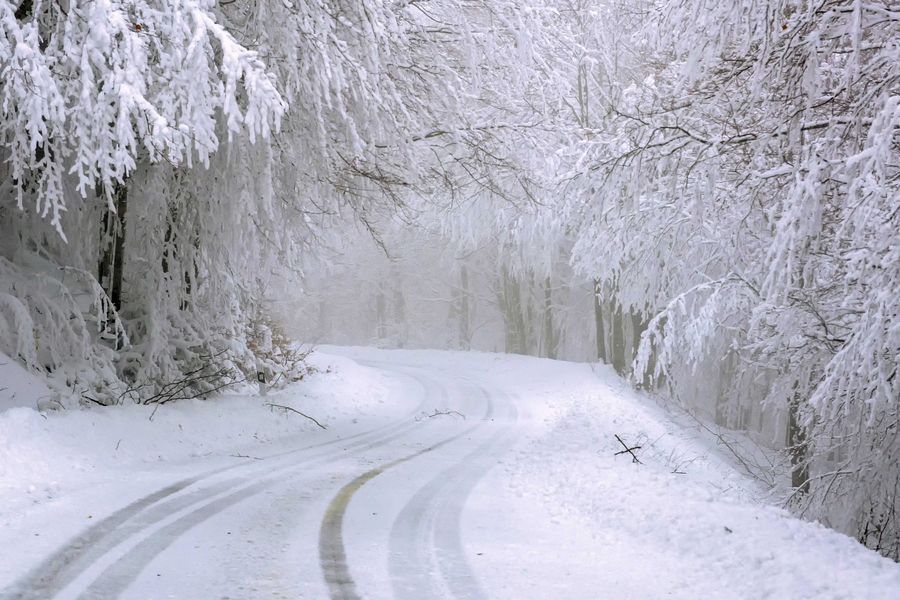5 Safety tips for your winter road trip
Don’t let winter weather keep you from checking out that new ski resort or those magical winter festivals. With the right preparation and techniques, you can brave the cold and have a safe and enjoyable road trip.
Five basic rules for traveling in winter
1. Prepare your vehicle
A safe winter journey begins with your tires, especially if snow and ice are possible on your route. Make sure they are structurally intact and properly inflated. Keep in mind that tire pressure rises or drops for every 10-degree temperature change. Before leaving, do the research and make sure what your tire pressure should be, and check them each time you stop for fuel. Most newer vehicles have a low tire pressure alert, so keep an eye on the gauge.
Pack a set of snow chains for light snow on paved roads. They should be removed if the road has been plowed or salted. For heavy snowfalls, you should switch your tires out for snow tires.
Low temperatures are a challenge for your vehicle. Meet it head-on by keeping your fluid levels full to help keep the containers from freezing. This includes engine oil, brake fluid, antifreeze, power steering fluid, and transmission fluid. Add washer fluid antifreeze to your windshield wiper fluid.
2. Pack the right equipment
When it comes to the right equipment, begin by thinking about what you will encounter on the way or at your destination. For example, you’d want to bring the right boots for snowshoeing, or walking in snow makes sense if you plan on doing that. Think of them as snow tires for your feet. They have sturdy, non-skid soles if you need to just walk in the snow. Plus, they also keep your feet super warm in those cold winter conditions.
Always expect the unexpected. Pack a shovel, a bag of sand or kitty litter, an ice scraper, a warm blanket for each passenger, jumper cables, flares, a portable phone charger, extra food and water, and a first aid kit. Before leaving, make sure to download a roadside assistance app on your phone.
3. Get familiar with winter driving techniques
Know the rules of the road for driving on snow and ice. Lane markings can be impossible to see on snow-covered roads, so stay in your lane and follow the car in front of you. Keep four to six seconds of stopping time between you and the car you are following.
Learn how to stop safely on an icy road. If you live in an area that doesn’t get much winter precipitation, download an instructional YouTube video. There are two methods for slowing down or stopping on snow and ice.
If your vehicle has an anti-lock brake system (ABS), it will pump the brakes for you. Simply hold the brake pedal down and steer in the direction you want to go. If your car doesn’t have ABS, pump the brakes gently and try to move in a straight line.
4. Research your route
In addition to the weather forecast, check your route for any winter weather conditions and road closures. Check the conditions for your destination and all points in between to make travel more enjoyable. Several smartphone apps will keep you informed of road closures. However, they may be slow to update for sudden storms or road incidents.
Keep the phone number and/or website of the local department of transportation handy along with the website of local news sources. For troublesome routes, always have a plan B in mind.
5. Book flexible accommodations
For winter travel, it’s a wise idea to build in extra arrival time. Additionally, check your overnight accommodations for flexible change and cancellation policies in case you have to make an unexpected stopover. For example, Airbnb has different categories depending on what the owner has allocated.
Also, know what the late check-in options are in case you have to modify your plans. Contactless entry is a good idea, especially if COVID is still lingering in the area of your destination.











